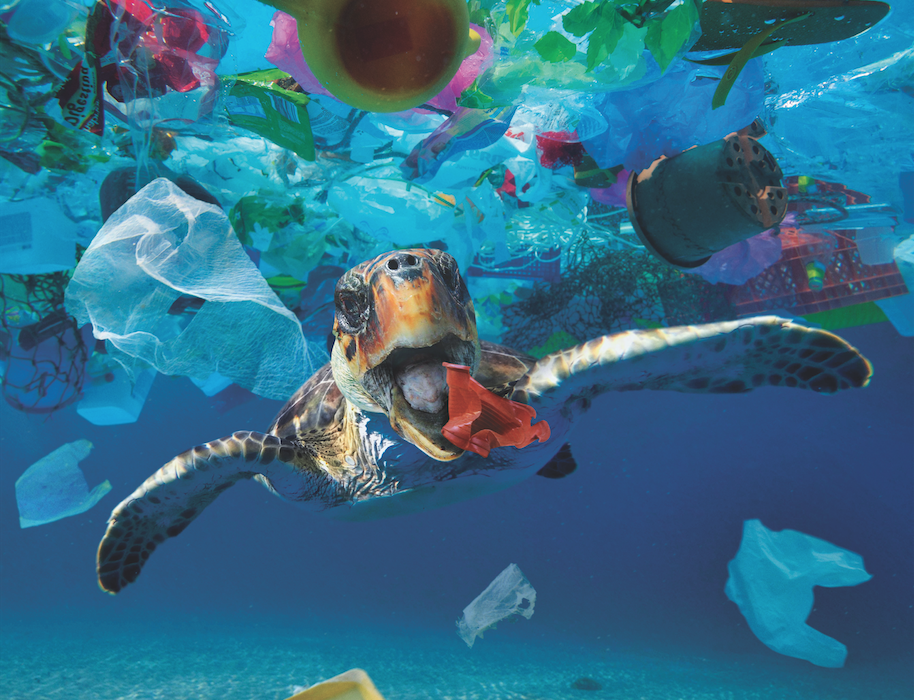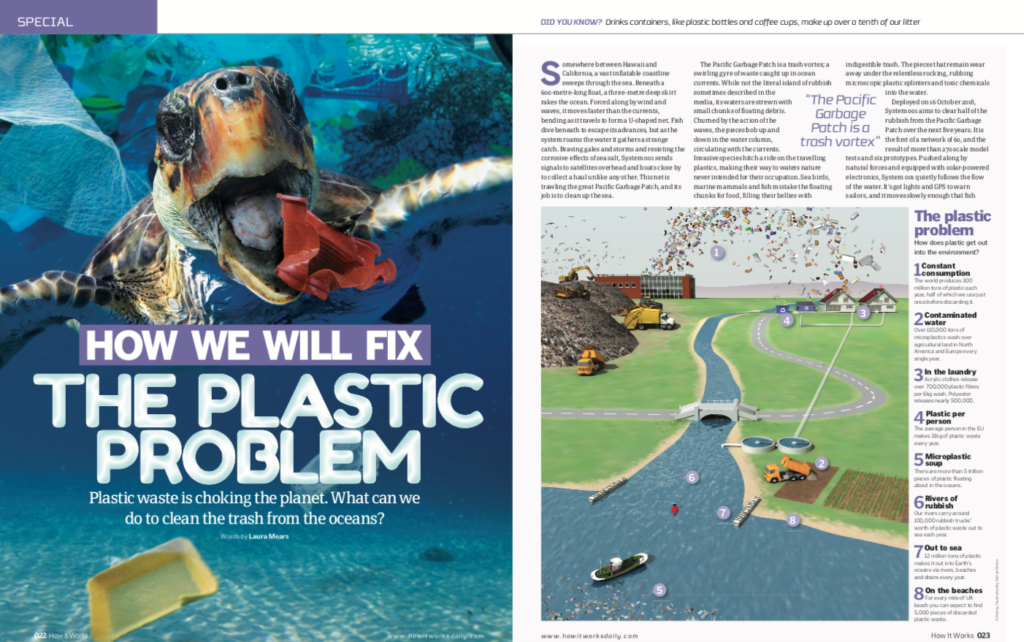How will we fix the plastic problem?
by Scott Dutfield · 02/07/2019

Plastic waste is choking the planet. What can we do to clean the trash from the oceans?
Somewhere between Hawaii and California, a vast inflatable coastline sweeps through the sea. Beneath a 600-metre-long float, a three-metre deep skirt rakes the ocean. Forced along by wind and waves, it moves faster than the currents, bending as it travels to form a U-shaped net. Fish dive beneath to escape its advances, but as the system roams the water it gathers a strange catch. Braving gales and storms and resisting the corrosive effects of sea salt, System 001 sends signals to satellites overhead and boats close by to collect a haul unlike any other. This net is trawling the great Pacific Garbage Patch, and its job is to clean up the sea.
The Pacific Garbage Patch is a trash vortex; a swirling gyre of waste caught up in ocean currents. While not the literal island of rubbish sometimes described in the media, its waters are strewn with small chunks of floating debris. Churned by the action of the waves, the pieces bob up and down in the water column, circulating with the currents. Invasive species hitch a ride on the travelling plastics, making their way to waters nature never intended for their occupation. Sea birds, marine mammals and fish mistake the floating chunks for food, filling their bellies with indigestible trash. The pieces that remain wear away under the relentless rocking, rubbing microscopic plastic splinters and toxic chemicals into the water.
Deployed on 16 October 2018, System 001 aims to clear half of the rubbish from the Pacific Garbage Patch over the next five years. It is the first of a network of 60, and the result of more than 270 scale model tests and six prototypes. Pushed along by natural forces and equipped with solar-powered electronics, System 001 quietly follows the flow of the water. It’s got lights and GPS to warn sailors, and it moves slowly enough that fish have plenty of time to get out of the way…
This article was originally published in How It Works issue 120, written by Laura Mears
For more science and technology articles, pick up the latest copy of How It Works from all good retailers or from our website now. If you have a tablet or smartphone, you can also download the digital version onto your iOS or Android device. To make sure you never miss an issue of How It Works magazine, subscribe today!





